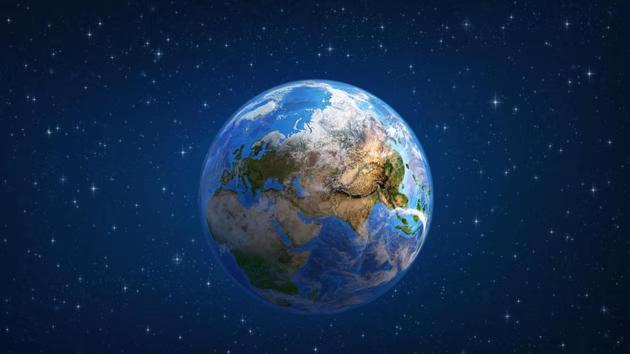
Earth may be sitting inside a giant cosmic void, suggest astronomers
The universe is a vast and mysterious place, full of secrets waiting to be uncovered. One of the most fundamental questions that scientists have been trying to answer is the rate at which the universe is expanding. However, recent discoveries have revealed a discrepancy in this rate, known as the “Hubble tension,” which has left astronomers scratching their heads. Now, a team of researchers has proposed a groundbreaking theory that could explain this anomaly, suggesting that our very own Earth and the Milky Way galaxy may be situated inside a massive void with very little matter.
The concept of the “Hubble tension” emerged when scientists began to notice that the rate at which galaxies were moving away from us was faster than predicted. This discrepancy was first identified by the Hubble Space Telescope, which was launched in 1990 to study the universe in greater detail. Since then, numerous studies have confirmed this anomaly, leaving astronomers to ponder its origins.
One possible explanation for the Hubble tension is that the universe is not uniform in its density and composition. This idea was first proposed by scientists in the 1990s, who suggested that the universe might be made up of separate regions with different properties. However, this theory has yet to be proven, and the search for an explanation continues.
Enter the latest theory, proposed by a team of astronomers from the University of California, Berkeley, and the University of Wisconsin-Madison. According to this theory, the Earth and the Milky Way galaxy may be situated inside a massive void with very little matter. This void, known as a “bubble,” would have a diameter of approximately 1.8 billion light-years, making it one of the largest structures in the universe.
The team used computer simulations to study the behavior of galaxies within this bubble and found that the rate at which they move away from each other is faster than would be expected in a uniform universe. This faster rate of expansion could account for the Hubble tension, providing a possible explanation for the discrepancy.
But how did this massive void come to be? The team proposes that it was created by the collapse of a large region of space around 13.8 billion years ago, during the early stages of the universe’s formation. This collapse, known as a “void collapse,” would have left a region with very little matter, which would then expand rapidly.
The implications of this theory are far-reaching and could revolutionize our understanding of the universe. If the Earth and the Milky Way galaxy are indeed situated inside this massive void, it could explain why the cosmos appears to expand faster here than in other areas. It could also provide insight into the nature of dark matter and dark energy, which are thought to play a key role in the universe’s expansion.
While this theory is still in its early stages and requires further testing, it has the potential to be a game-changer in the field of astronomy. The discovery of a massive void could provide a new perspective on the universe, challenging our current understanding and opening up new avenues for research.
In conclusion, the theory that the Earth and the Milky Way galaxy may be situated inside a massive void is a fascinating and intriguing concept. While it is still in its early stages, it has the potential to explain the Hubble tension and provide new insights into the nature of the universe. As scientists continue to study this phenomenon, we may uncover new secrets about the cosmos and our place within it.
Source: https://www.newsbytesapp.com/news/science/earth-may-be-in-a-massive-void-say-astronomers/story






